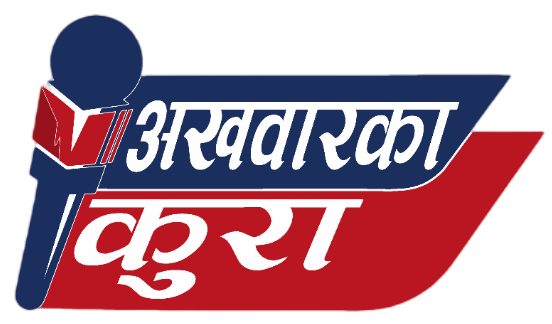Tourism is the act of travel and moving out of the place other than residing permanently. It is a social, cultural and economic phenomenon which acts to the movement of the people places in the country or other countries other than their usual environment for business, personal, adventure, leisure as the purpose. Nepal a holy land birth place of Lord Gautam Buddha, the light of Asia has a diverse geography, flora & fauna, hilly region, fertile plains and eight out of ten world’s highest mountain including Mt. Sagarmatha as the highest point of the earth. Besides its exotic culture, landscapes and welcoming hospitality growth in the industry has held back by political instability and poor infrastructures. Tourism also has been recognized as a priority sector since the formulation of the second tourism policy in 2008. It has been seen that Nepalese tourism industry has been very sluggish ever since the early times. Now it is the high time where we can improve the socio-economic condition of Nepal through the enforcement of sustainable development of tourism and flourish Nepal as one of the best and glorious destination in the world.
Known that tourism is one of the world’s most competitive industries and the sector surges to unique selling propositions that helps effectively promote their offerings. Modern marketing has tremendously utilized the digital platform such as social medias and websites to reach potential customers. Staying abreast of current trends is essential for marketers aiming to develop a diversified marketing mix that resonates with prospective tourists (Basnet, 2018). Marketing is satisfying customers through creating the right price, right promotion, right placement (kotler et al., 2014). Thus it is the marketing activity carried out by tourism operators and the government to develop high end tourism marketing activity to influence the tourist to visit overseas country. The sum of the population of India and China being the worlds one-third population, targeting these two countries could be more than enough for Nepalese tourism (UN, 2019). Nepal shares a boarder with five Indian states ranging almost 1690 km with Uttarakhand, Bihar, Sikkim, Uttar Pradesh and West Bengal. Nepal shares an open boarder with India which makes it the most feasible for Indian Tourists. Nepal shares 14 district bordering to china. They are Solukhumbu, sankhawasabha, Dopla, Mustang, Manang, Gorkha, Dhading, Rashwa, Sindhupalchowk, Kavrepalanchowk, Dolakha, Kavrepalanchowk, Mugu, Humla and Bajhang. There are huge possibilities of tourism industry in Nepal which has been a centre of destination for perfect tourism because of its attraction site, pleasing weather, scenic beauty, snowcapped mountains, historical and cultural factors.
Promotional strategies for service industry
Service industry has been increasingly growing rapidly and achieving the highest share in Gross Domestic Product capturing the wide span of the tourism industry. The strategies for promotion for the service industry can be use of social medias, email marketing, advertisement, referrals, creating goggle business platforms, search engine marketing, promotions and many more. Generally service includes the features of intangibility.perishability, variability, heterogeneity, creating it a everlasting industry. Therefore it is important to highly understand the customers and the service seekers, the level of service quality and the strength and the competitive advantage of the service.
COVID 19 breakout in Nepal and the effect of lockdown and travel restriction in tourism Industry
It was the case of health emergency where each countries making their effort to fight the Global pandemic. The first case of COVID-19 pandemic was con rmed in Nepal on 23 January 2020 when a 31-year-old student, who had returned to Kathmandu from Wuhan, China on 9 January, tested positive for the disease (Shrestha et al, 2020). The travel restrictions imposed by governments subsequently led to the reduction in the demand for all forms of travel which forced some airlines to temporarily suspend operations (Ozili & Arun, 2020). On 4th April, 2020 The first case of local transmission was detected in Kailali, and the first death caused by COVID-19 was seen on 14th May 2020. The countries Had implemented necessary preventive measures and control including the lockdown and restrictions for reducing the transmission. It had been seen the increase in the international tourist in 2019 which reached to 1.19 million which surged a growth than 2018.
Post-COVID Tourism Recovery in Nepal
Global Guidelines developed by UNWTO to restart Tourism has prioritized the vision of development and implementation of recovery plans and policies which contribute to the Sustainable Development Goals (SDGs) which recommends lines of action to guide a responsible tourism recovery for people, planet and prosperity with an interaction of the public, private and government interventions, Much of work has been done in shaping and strengthening tourism planning and development for responsible and meaningful tourism development in Nepal and implementing the strategies for up liftment of overall tourism development. Nepal being the prime destination and choice of the visitors approaching nature based destinations can be applicable for the sustainable approach for revival. Therefore the way forward is the green tourism strategies to be implemented the concept of restart, revive and rethink for sustaining and streamlining tourism in new normal. The tourism industry should collaborate approaches for tourism resilient building and preparedness for possible future crisis. Nepal itself can be a prospect of attracting tourist both domestic and international for meditation, yoga and well being, organic foods, agro-tourism, local culture and local people and wilderness.
View : 1197
 कम्पनी दर्ता नं.- ३७६१९२/८२८३
कम्पनी दर्ता नं.- ३७६१९२/८२८३
Copyright © 2023 -2025. Akhabar ka kura | News. All Rights Reserved